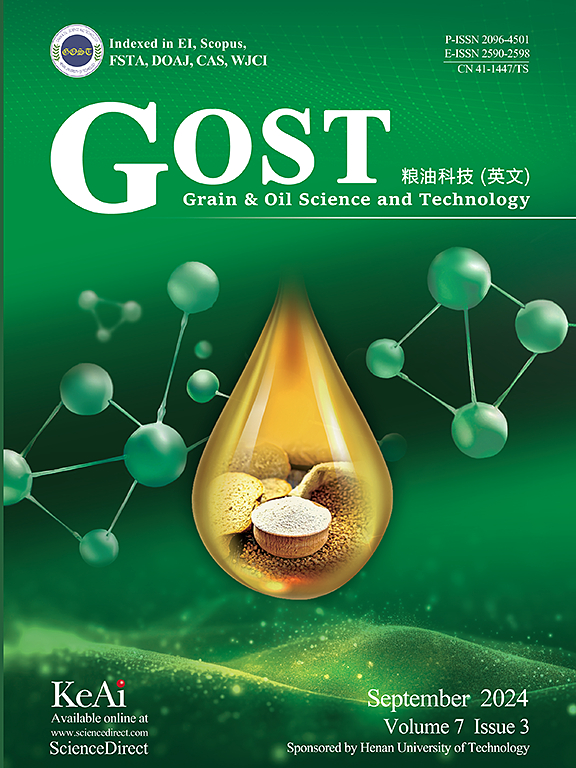Complexation process and binding parameters of curcumin and short amylose with V7-type helix structure
Q2 Agricultural and Biological Sciences
引用次数: 0
Abstract
Pre-formed V7-type short amylose (SA) could interact with curcumin to form inclusion complex (IC) thereby to improve the stability of curcumin. However, the complexation mechanism of V7-type SA and curcumin is not clear, which limit the improvement of inclusion efficiency. To obtain a starch nanocarrier with high loading capacity, the encapsulation process and interaction parameters of V7-type SA-curcumin IC was studied. The analysis results demonstrated that stoichiometric ratio value of the SA-curcumin complex was around 1. V7-type SA performed excellently in the delivery of curcumin attributing to their high loading capacity (over 20%). It was found that curcumin could enter into the pre-formed helical cavity of SA to form an IC. The conformation change of SA caused the reduction in the interaction ratio in the last 20 ns of simulation. However, SA and curcumin always remained complexation status during the simulation. Hydrogen bonds (H-bonds) and hydrophobic interaction were the most critical acting forces involved in the formation and stability of V7-type SA-curcumin complex. Molecular docking presented that H-bonds interaction between curcumin ligand and V7-type SA chain (O3 at the 25th glucose unit, and O6 at the 17th and 20th glucose units) were found. Furthermore, the hydrophobic interactions were discovered between curcumin ligand and SA chain (18th, 19th, 21st, 22nd and 23rd glucose units).

v7型螺旋结构姜黄素与短直链淀粉的络合过程及结合参数
预形成的v7型短直链淀粉(SA)可与姜黄素相互作用形成包合物(IC),从而提高姜黄素的稳定性。然而,v7型SA与姜黄素的络合作用机制尚不清楚,限制了包合效率的提高。为获得高负载容量的淀粉纳米载体,研究了v7型sa -姜黄素IC的包封工艺和相互作用参数。分析结果表明,sa -姜黄素复合物的化学计量比值在1左右。v7型SA在姜黄素的输送中表现优异,因为其负载能力高(超过20%)。结果表明,姜黄素可以进入SA预形成的螺旋腔形成IC,在模拟的最后20 ns, SA构象的改变导致了相互作用比的降低。而SA和姜黄素在模拟过程中始终保持络合状态。氢键和疏水相互作用是影响v7型sa -姜黄素复合物形成和稳定性的最关键的作用力。分子对接发现,姜黄素配体与v7型SA链(第25个葡萄糖单元为O3,第17和第20个葡萄糖单元为O6)存在氢键相互作用。此外,还发现了姜黄素配体与SA链(第18、19、21、22和23个葡萄糖单位)之间的疏水相互作用。
本文章由计算机程序翻译,如有差异,请以英文原文为准。
求助全文
约1分钟内获得全文
求助全文
来源期刊

Grain Oil Science and Technology
Food Science
CiteScore
7.30
自引率
0.00%
发文量
69
审稿时长
12 weeks
期刊介绍:
 求助内容:
求助内容: 应助结果提醒方式:
应助结果提醒方式:


